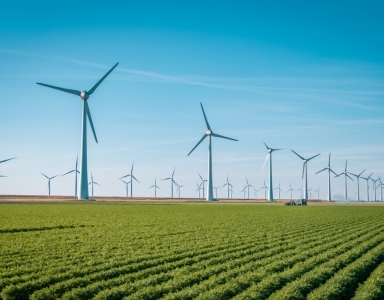First Innovation Fund call exceeds budget almost 20 times!
The Expression of Interest phase of the first call of the new Innovation Fund closed at the end of October. Although some new programmes still have to gain popularity once introduced and the amount of submitted projects can be somewhat disappointing, nothing is less true for the Innovation Fund. With an available budget of € 1 billion and 311 submissions, the fund’s budget was exceeded over 20 times! Will the Innovation Fund follow in the footsteps of the EIC Accelerator and become a victim of its own popularity?
Selection process in two steps
The Innovation Fund follows two steps in order to select projects: during the first phase, candidates have to submit a concise project proposal. The best projects will be selected and asked to submit an elaborate application. In order to make an informed decision, it has been determined beforehand that about 70 projects (worth approximately 2,5 times the available budget) will make it to the next round. After the second and final round (second quarter of 2021) the projects will be ranked and the budget will be divided based on the amount of points scored by each project.
The available budget for this call is € 1 billion and will be divided over 19 industrial sectors that are focussed on developing clean and innovative technologies for a more sustainable economy.

Innovation Fund even more popular than expected
We already expected a lot of parties to show interest in the Innovation Fund, however, its current popularity was a surprise to us all! It’s a wonderful development that there are this many great ideas dedicated to a cleaner and more sustainable world and European industry. As a result, we are curious what will now happen to all these project proposals.
In principal, it has been stated that when ranking the projects, the amount of high-scoring projects from the same countries are taken into account. This may result in only one or two projects receiving an allotment. The distribution of the projects over all sectors may have a similar levelling effect. After all, dividing the available budget over 19 sectors will most likely result in only one to three projects per sector receiving an allotment. Furthermore, no country or sector wants to remain empty-handed. All in all, this is a difficult puzzle to solve.
Low chances of success | who receives support?
Based on 311 applications worth € 21,7 billion, an average project costs approximately € 70 million. This means that, with a budget of € 1 billion, only 14 projects may receive funding. The chances of success are a meagre 4,5%.
Countries with multiple innovative industries (such as the Netherlands) are, based on the abovementioned manner of distribution, at risk of receiving funding for a very limited amount of projects. Besides, it’s hard to predict which sectors may receive funding: will this result in old-fashioned horse trading where projects with a strategic and national importance are traded in for projects with less political interest? Will a large-scale project be traded in for two smaller ones from the same sector or vice versa? My advice to the Innovation and Network Executive Agency (INEA): be transparent!
European green goals under pressure
My expectation is that more projects than planned will be let through to the next round. After all, this is free and defensible during the search for qualitative projects. The question at hand is what will happen during phase 2: will they clear more budget or will it result in many disappointed companies? The latter will be a shame as most projects kick-off in 2022 at the earliest and won’t be operational for years. Further delay because projects have to wait on new calls puts the European and Dutch green goals under intense pressure.
Applicants will receive an invitation to the next phase at the end of March 2021 at the latest.
Contact us for more information
Or call us directly: 088 495 20 00



